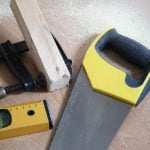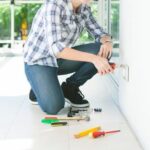Are you wondering how to improve heat in your home? Understanding your home’s heating system is the first step to ensure optimal warmth and comfort during the colder months. Whether you have a furnace, boiler, heat pump, or another type of heating system, it’s crucial to know how to identify and maintain it for peak efficiency.
Identifying the type of heating system in your home is essential for understanding its specific maintenance needs. Regular maintenance plays a key role in ensuring that your heating system operates at its best. In this section, we will explore the different types of heating systems and explain the importance of regular maintenance for optimal heating efficiency.
Additionally, conducting a thorough assessment of heat leakage in your home can uncover areas where heat is escaping, such as windows, doors, or the attic. This assessment can help you pinpoint sources of heat loss and determine whether upgrading insulation or sealing air leaks is necessary. By taking these steps, you can significantly improve your home’s heat retention and overall comfort.
Assessing Heat Leakage in Your Home
Identifying areas of heat leakage in your home is crucial in improving the overall heat retention and energy efficiency of your living space. By conducting a home energy audit, you can pinpoint sources of heat loss and take steps to address them effectively. Here are some key steps to assess heat leakage in your home:
1. Identify Common Areas of Heat Escape: Perform a thorough inspection of your home to locate common areas where heat can escape, such as windows, doors, attic, and even electrical outlets. Drafty windows and poorly insulated attics are often major culprits for heat leakage.
2. Conduct a Home Energy Audit: Consider hiring a professional or using DIY energy audit kits to assess the energy efficiency of your home. This will help you identify specific areas that need improvement and prioritize necessary upgrades.
3. Impact of Proper Insulation: Adequate insulation plays a vital role in retaining heat within your home. Upgrading insulation in key areas such as attics, walls, and floors can significantly reduce heat leakage and improve overall comfort.
By addressing these aspects, homeowners can take meaningful steps towards reducing their energy consumption and creating a more comfortable living environment year-round.
Upgrading Your Insulation
Exploring Different Types of Insulation Materials
When it comes to upgrading your insulation, it’s important to understand the different types of insulation materials available. From fiberglass and cellulose to foam and reflective insulation, each material has its own set of advantages and effectiveness in retaining heat. By researching and consulting with a professional, you can determine the best type of insulation for your specific home and needs.
The Benefits of Upgrading Insulation
One of the key benefits of upgrading your insulation is the improved heat retention it provides. Proper insulation helps maintain a consistent temperature in your home, reducing the workload on your heating system and ultimately lowering energy costs. Additionally, upgraded insulation can also contribute to better indoor air quality by minimizing drafts and preventing moisture buildup, making for a more comfortable living environment.
How to Properly Install or Upgrade Insulation
Proper installation or upgrade of insulation is crucial for maximizing its effectiveness in retaining heat. Whether you opt for adding more insulation in the attic, walls, or floors, ensuring that it is properly installed is essential. Hiring a professional installer is recommended to ensure that insulation is placed correctly without any gaps or compression that could reduce its efficiency. Additionally, proper ventilation should also be considered when upgrading insulation to avoid any potential issues with moisture buildup.
Sealing Air Leaks
Air leaks in your home can significantly impact the efficiency of your heating system, causing heat loss and higher energy bills. Identifying and properly sealing air leaks is crucial to improving the heat in your home. Here’s how you can tackle this important task:
- Conduct a thorough inspection: Start by identifying areas where air leaks are common, such as around windows, doors, electrical outlets, and pipes. Use a lit incense stick or a thermal leak detector to help pinpoint drafts.
- Seal windows and doors: Use caulking or weather-stripping to seal gaps around windows and doors. Replace worn-out weather-stripping and apply fresh caulking where necessary.
- Insulate electrical outlets and pipes: Install foam gaskets behind outlet and switch plates to prevent air leaks. Use spray foam insulation to seal gaps around pipes and plumbing fixtures.
- Consider door sweeps and draft stoppers: Install door sweeps on exterior doors to prevent drafts from coming in at the bottom. Use draft stoppers or snake-shaped fabric barriers along the bottom of interior doors to further minimize air leakage.
By taking these steps to identify and seal air leaks in your home, you can effectively improve the heat retention within your living space, leading to a more comfortable environment while also reducing energy waste and lowering heating costs.
Maximizing Sunlight for Natural Heat
In addition to window placement and coverings, passive solar heating can also be utilized to capture and retain solar heat. This involves designing or modifying your home in a way that allows it to absorb and store solar energy.
This can include things like installing thermal mass materials such as stone or concrete floors, which absorb heat from the sun during the day and release it slowly at night. Roof overhangs are another passive solar design feature that can be used to block out unwanted summer sun while allowing winter sun in.
According to data from the US Department of Energy, properly using sunlight for natural heating purposes could lead to significant reductions in overall energy usage-with potential savings ranging from 10% – 30%. By incorporating these simple yet effective strategies into your home, you can not only enjoy a warmer living environment during chilly weather but also contribute towards a more sustainable and energy-efficient household.
| Key Strategies | Potential Savings |
|---|---|
| Optimizing window placement and curtains/blinds use | 10% |
| Passive solar heating design features (thermal mass materials, roof overhangs) | 30% |
Utilizing Space Heaters and Fireplace
When it comes to improving heat in your home, utilizing space heaters and fireplaces can be a great way to add extra warmth to specific areas. Space heaters are a popular choice for supplementing central heating systems, especially in rooms that may not receive adequate warmth. There are various types of space heaters available, including ceramic, radiant, and oil-filled, each with its own benefits and suitability for different spaces.
Safety Considerations
Before using a space heater or fireplace, it’s essential to consider safety measures to prevent accidents and maintain indoor air quality. Always follow the manufacturer’s guidelines for safe usage and placement of space heaters. Keep them away from flammable materials and never leave them unattended. It’s also crucial to have working smoke detectors installed in the area where space heaters or fireplaces are being used.
Choosing the Right Type
When selecting a space heater, consider factors such as the size of the room you want to heat, energy efficiency, and additional features like programmable thermostat settings. For fireplaces, options range from traditional wood-burning fireplaces to more modern gas or electric models. Each type has its own benefits in terms of convenience, ambiance, and heating ability.
Overall, when incorporating space heaters and fireplaces into your home heating strategy, it’s important to prioritize safety while considering the specific needs of each room. By understanding how these supplemental heating sources can efficiently provide warmth in specific areas of your home, you can create a comfortable and inviting living environment during the colder months.
Optimizing Your Heating System
When it comes to improving the heat in your home, one key aspect to consider is optimizing your heating system. This involves taking proactive steps to ensure that your existing heating system is working at its best and distributing heat efficiently throughout your home. One important factor to consider is regular HVAC maintenance.
By scheduling annual maintenance for your heating system, you can ensure that it is operating at peak performance and efficiency. This can also help identify any potential issues early on, preventing costly repairs down the line.
Another way to optimize your heating system is by setting and programming your thermostat for optimal heat distribution. For example, during the winter months, you can set your thermostat to lower temperatures while you are asleep or away from home, and then program it to increase the temperature when you are awake and at home. This not only helps conserve energy but also ensures that you have the right amount of heat when you need it most.
By taking these steps to optimize your heating system, you can improve overall efficiency, reduce energy consumption, and ensure that every room in your home is comfortably heated. In addition, proper maintenance and programming of your heating system can lead to cost savings on energy bills over time.
| Aspect | Details |
|---|---|
| HVAC Maintenance | Schedule annual maintenance for optimal performance |
| Thermostat Programming | Set and program thermostat for efficient heat distribution |
| Energy Savings | Potential cost savings on energy bills with optimized heating system |
Investing in Energy-Efficient Heating Solutions
In conclusion, there are various ways to improve the heat in your home, from understanding your heating system to investing in energy-efficient solutions. By taking the time to assess heat leakage, upgrade insulation, seal air leaks, maximize natural sunlight, and utilize supplemental heating options, you can create a more comfortable living environment while also reducing energy costs.
Regular maintenance of your heating system is crucial for optimal efficiency, and by exploring energy-efficient upgrades, you can further enhance both the comfort and sustainability of your home.
One key aspect of improving the heat in your home is investing in energy-efficient heating solutions. Upgrading to energy-efficient systems not only helps reduce your environmental impact but can also lead to significant cost savings in the long run.
Whether it’s choosing a high-efficiency furnace or exploring other innovative options such as geothermal heat pumps or solar heating systems, there are various choices available to suit different homes and budgets. By making the switch to energy-efficient options, homeowners can enjoy improved heat retention and distribution while reducing their carbon footprint.
Additionally, it’s essential to consider the long-term benefits when selecting an energy-efficient heating solution for your home. These upgrades not only contribute to a more sustainable future but can also add value to your property.
As technology continues to advance, there are now more choices than ever for homeowners looking to improve their heating systems. By consulting with HVAC professionals and conducting thorough research on available options, you can make an informed decision that will enhance the overall comfort and efficiency of your home for years to come.
Frequently Asked Questions
How Can I Improve the Warmth in My House?
There are several ways to improve the warmth in your house. One option is to add insulation to your walls, attic, and floors to trap heat inside. Another way is to seal any drafts or air leaks around doors and windows.
How Can I Make My House Heat Hotter?
To make your house hotter, you can try adjusting the thermostat to a higher temperature. Additionally, consider using a space heater in specific rooms that need extra warmth. If you have a fireplace, lighting a fire can also help raise the temperature.
Why Is My House So Hard to Heat?
If your house is hard to heat, it could be due to poor insulation, especially in older homes. Another reason could be old or inefficient heating systems that struggle to keep up with the demand. Additionally, drafty windows and doors can allow heat to escape and cold air to enter, making it harder to maintain a consistent temperature.

I’m thrilled to have you here as a part of the Remodeling Top community. This is where my journey as an architect and remodeling enthusiast intersects with your passion for transforming houses into dream homes.





